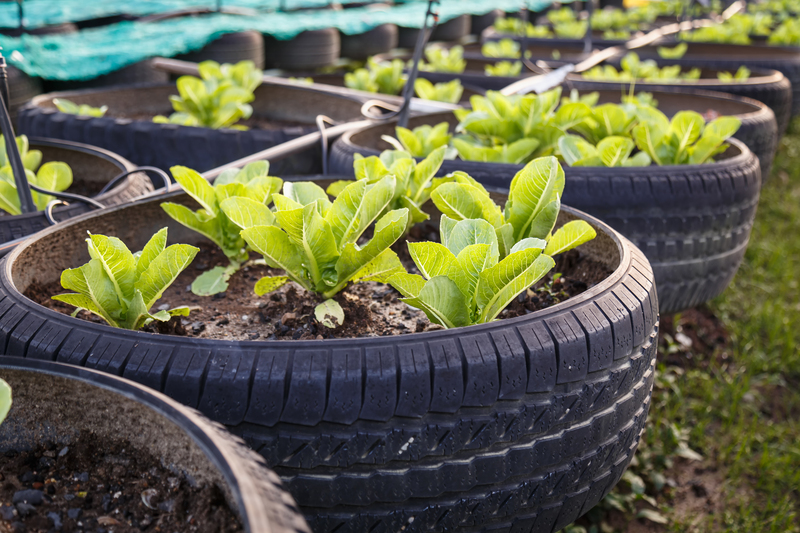Practical Advice for Managing PPE Waste at Home and Work
The use of Personal Protective Equipment (PPE) has skyrocketed in recent years, both at home and in the workplace, due to public health concerns and infection control protocols. While PPE--such as masks, gloves, face shields, and gowns--offers vital protection against contaminants and diseases, it has also led to a significant rise in waste. Proper management and disposal of PPE waste are now essential to protect public health and minimize environmental impacts.
Understanding PPE Waste and Its Impact
Personal Protective Equipment waste poses unique challenges. Unlike regular household or office refuse, PPE waste can become a source of contamination if not handled properly. alert Such waste, which includes single-use masks, latex or nitrile gloves, and various types of gowns and aprons, has been found polluting streets, waterways, and natural habitats.
Types of PPE Waste
- Single-use masks (surgical masks, disposable respirators such as N95s)
- Reusable fabric masks (when worn out, damaged, or otherwise unusable)
- Disposable gloves (latex, nitrile, vinyl)
- Face shields and goggles
- Medical gowns and aprons
- PPE packaging materials (e.g., plastic wrapping, boxes)
Environmental and Health Consequences
Improperly disposed PPE can:
- Spread viruses and harmful bacteria
- Endanger waste collection workers
- Clog drainage systems and contribute to flooding
- Pollute oceans and land habitats--threatening wildlife
- Add to the ever-increasing load of plastic pollution

Best Practices for Managing PPE Waste at Home
Managing PPE waste responsibly at home is vital for safeguarding your family and community. Here are step-by-step tips for managing PPE waste safely and efficiently.
1. Segregate Used PPE Waste
- Designate a separate, lined trash bin for PPE items such as masks and gloves.
- Ensure the bin has a lid to prevent accidental spills or contact.
2. Handle Used PPE with Care
- Always wash your hands thoroughly with soap and water before and after handling used PPE.
- Remove gloves first before masks to minimize potential self-contamination.
- Avoid touching your face, eyes, or mouth when handling used PPE.
3. Proper Disposal Procedures
- Place used PPE in a strong plastic bag and knot it tightly before placing it in your dedicated PPE waste bin.
- Do not dispose of PPE in recycling bins unless specified by your local authority--most PPE is non-recyclable.
- Never flush masks, gloves, or wipes down the toilet as this can cause plumbing and environmental issues.
4. Cleaning and Maintaining PPE Bins
- Regularly sanitize your PPE-waste bin with a disinfectant spray or wipe.
- If available, wear gloves while taking out PPE waste to the main trash collection point.
5. When to Use Reusable Alternatives
- Reusable cloth masks can be washed after each use, reducing single-use waste.
- Follow the manufacturer's guidelines for washing and maintaining reusable PPE.
- Inspect reusable equipment regularly for wear and replace when necessary.
PPE Waste Management at Work: Workplace Strategies
Workplaces generate significant PPE waste, especially in healthcare, manufacturing, hospitality, and education sectors. Institutions must develop robust strategies for PPE waste management to ensure compliance, employee safety, and environmental responsibility.
1. Implement a Clear PPE Waste Policy
- Establish clear protocols for PPE usage, collection, and disposal specific to your workplace.
- Train all staff members on PPE disposal procedures and regularly update them as guidelines evolve.
2. Provide Appropriate Disposal Infrastructure
- Place designated PPE waste bins in high-use and high-traffic areas--including entrances, break rooms, and workstations.
- Bins must be clearly labelled as "PPE Waste Only" and should be lined and covered for safety.
3. Safe Collection and Temporary Storage
- Ensure custodial staff use adequate PPE themselves when handling collected waste.
- Store collected PPE waste in a secure area until removal to prevent unauthorized access or accidental exposure.
4. Coordination with Waste Management Services
- Partner with licensed waste management companies experienced in handling potentially infectious or hazardous waste.
- Ensure all collections are traceable and comply with local regulations.
5. Encourage Waste Reduction Practices
- Promote the use of reusable PPE where appropriate and feasible.
- Optimize PPE usage to avoid unnecessary consumption--train staff to use PPE only when required.
Tips for Reducing the Environmental Impact of PPE Waste
Choose Reusable PPE When Possible
Switching to reusable masks, face shields, and gowns can significantly minimize waste generation. Reusable PPE can be properly sanitized and reused multiple times, which cuts down the amount of single-use plastics going to landfill or incineration. Make sure reusable PPE meets regulatory standards for protection and hygiene.
Recycle PPE Waste Responsibly (Where Possible)
Currently, most single-use PPE--especially items contaminated with biological matter--is not recyclable via regular municipal recycling programs. However, some manufacturers and waste management companies offer specialized collection and recycling schemes for PPE. For example:
- TerraCycle and other companies have PPE recycling boxes and programs specifically designed for gloves, masks, and face shields.
- Check with your employer or local authority regarding any available PPE recycling options.
Educate Household Members and Employees
- Conduct regular awareness sessions on why proper PPE waste management matters.
- Display posters or infographics near PPE waste bins with clear, illustrated instructions.
Reduce Unnecessary PPE Consumption
- Don't use gloves or masks unnecessarily at home or in low-risk settings.
- Assess PPE policies at work to ensure PPE is deployed based on need and guidelines, not merely out of habit.
Legal and Regulatory Compliance
PPE waste, particularly from workplaces, can be classified as hazardous waste in many regions. Improper handling and disposal can lead to legal penalties and endanger public health. Therefore, always check with your local, state, or national waste management authority regarding:
- Labelling and segregation requirements for PPE waste
- Approved transport and disposal methods for hazardous or medical waste
- Recycling or reuse mandates for certain types of PPE
Innovative Solutions and Future Trends in PPE Waste Management
Emerging Technologies
- Biodegradable PPE: Researchers are developing face masks, gloves, and other equipment from biodegradable materials like plant starches.
- PPE Waste-to-Energy: Some waste treatment plants are converting PPE waste to energy, reducing landfill reliance.
Community Initiatives
- Some cities and towns organize PPE waste collection drives to prevent environmental pollution.
- Corporate social responsibility (CSR) projects are funding PPE collection and recycling stations.

Frequently Asked Questions About PPE Waste Management
- How should I dispose of disposable masks and gloves at home?
- Place used masks and gloves in a plastic bag, knot tightly, and dispose of them in your bin designated for PPE waste. Avoid recycling bins as PPE is not recyclable in most areas.
- Can reusable masks be thrown in the trash?
- Only dispose of reusable masks when they are damaged or unusable. Otherwise, wash and sanitize regularly for continued reuse.
- Are there special PPE disposal requirements for offices?
- Most workplaces must follow legal guidelines for hazardous or contaminated waste. Use labelled, lined bins and coordinate with approved waste handlers for safe collection and disposal.
- What are the dangers of improper PPE disposal?
- Improperly disposed PPE can spread disease, harm wildlife, clog drainage systems, and contribute to environmental pollution.
Conclusion: Building a Responsible PPE Waste Management Routine
Whether at home or in your workplace, managing PPE waste responsibly is a critical aspect of public health and environmental stewardship. By implementing proper disposal practices, adopting effective workplace policies, and staying informed about new solutions, every individual and organization can do their part in reducing the hazards and environmental impacts of PPE waste.
Remember, a little care in the handling and disposal of protective equipment goes a long way toward a safer, cleaner, and more sustainable world. Stay proactive, educate others, and adopt innovative approaches for practical and effective PPE waste management!